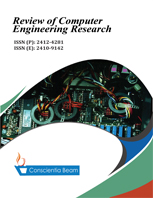Performance analysis of OFDM with variations in cyclic prefix and FFT lengths
DOI:
https://doi.org/10.18488/76.v10i4.3551Abstract
Orthogonal Frequency Division Multiplexing (OFDM) is a modern and suitable modulation strategy for commercial high-speed broadband wireless communication systems. This is because wireless services and demands have grown so quickly in recent years. While creating wireless communication, the channel environment is crucial. A square grid with identical vertical and horizontal spacing is used for the constellation points in quadrature amplitude modulation (QAM). More bits can be transferred per symbol to higher-order modulation forms. This research has looked at how Orthogonal Frequency Division Multiplexing OFDM systems perform using different modulation techniques on channels with additive white Gaussian noise (AWGN). Using MATLAB software to do an experiment with different modulation methods and parameters such as FFT length and cyclic prefix findings showed that 64-QAM modulation sends the same amount of data faster and with fewer symbols than QPSK 16-QAM. Here, the 64-QAM modulation technique performs better. An extensive literature survey has been carried out. The work done here involved working on many parameters to improve the performance of OFDM, i.e., by reducing BER, changing modulation techniques, and analyzing the trade-off between cyclic prefix length and Bit Error Rate. Compared to the existing work, the proposed system provides better performance.





